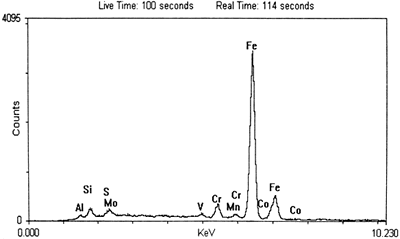finch204, thank you for sharing those details.
After reading your post, (yes, your links don't work) I did a search here.
I went to page 3 of that search and clicked on about 7 threads or so. The general concensus was that lots of people, especially Protoge owners, used Seafoam with success. Years of succcess and nobody had problems due to it, except one person had a bad O2 sensor (~100k mile car) immediately after it, but I predict that is more to do with it being marginal and Seafoam pushed it over the edge. 100k failure on an O2 sensor is fairly normal and not crazy. It may also have been there was so much crap and the sensor just needed cleaning to make it work again. I don't know as there's no additional details or photos.
I then realized you said Mazdaspeed forums, and I didn't search there, but here, which is a different forum.. (hand slap to forehead)
I did a search but I didn't find anything in the 5 threads I skimmed through. I've gotten tired and impatient now seeing so much bs and no meat on the forums.
Found the following video (on a Harley Davidson forum with the title, "Why you should NOT use Seafoam...")
that says Seafoam, although works a little, is not as good as regular fuel injector cleaner when you
soak valves in the solutions at room temperature overnight.
My (not his) conclusion, in this
unique testing situation,
both disolve remove material from the valves. His brand of fuel injector cleaner seems to do it better job than Seafoam in his test situation.
The following video is a better test as they use valves from two different engines and he takes them out of the solution to check them.
(note that these are all at room temperature and not heated to 195F.)
Here, unlike the above video, Seafoam is a darker color, but
seems to not remove the material more than Berrymans B-12.
Here, he conclusively proves, you can't judge material removal based on delution color. This is absolutely true.
(
ignore that his glove reacts to Barrymans B-12 because you don't know what material the glove is. Somebody confidently claimed thay are rubber, but if you watch the video, he doesn't say what material they are. Be cautious of assumptions. If you read the replies, you'll find their Nitrile and the solution is completely safe for the car.)
Again, these videos are not scientific and there are way too many unknown variables.
A proper test would be a much more controled and analyzed test.
A. Verify the condition of the test pieces.
.........a. Take a few samples of deposit.
..................1. What precise chemicals are found and at what amount. Create a chart like this telling you what materials are there.
...........................
.........b. Measure precise thickness of deposit and several points.
.........c. Measure the valve surfaces and material.
..................1. Is the valve plated with anything? If so, what?
..................2. What precise material is the valve made of?
..................3. Measure exactly how rough or smooth the surface finish is on the neck, top face, bottom face.
.........d. Take samples of the test solutions (seafoam, injector cleaner, or Barrymans B-12).
..................(Sometimes the chemistries change over time or the ratio of the chemicals within change over the years. You can't blindly assume for example, the Seafoam sold 5yrs ago is the EXACT SAME sold today)
..................1. Like the deposits, measure what precise chemicals are found and at what amount.
.........d. Measure air temp, solution temperature, and valve temperature.
B. Introduce solutions.
C. Verify the condition of the test pieces.
.........a. Take a few samples of deposit remaining.
..................1. What precise chemicals are found and at what amount.
.........b. Measure deposit thickness remaining at exact same points as before.
.........c. Measure chemistry of desolved material in chemical solution.
Even after this test, you still wouldn't have tested it at temperature with air blowing over it, with fuel, or the exact enviornment it's used.
Heating two different materials that are attached to each other, will cause them to change size at different rates and can help to separate them (depending on the materials).
My conclusion based on my research,
Barrymans B-12 before each 2nd oil change.
I plan to return my Seafoam to the store. I'm confident it helps, but I believe Barrymans B-12 does a better job.

